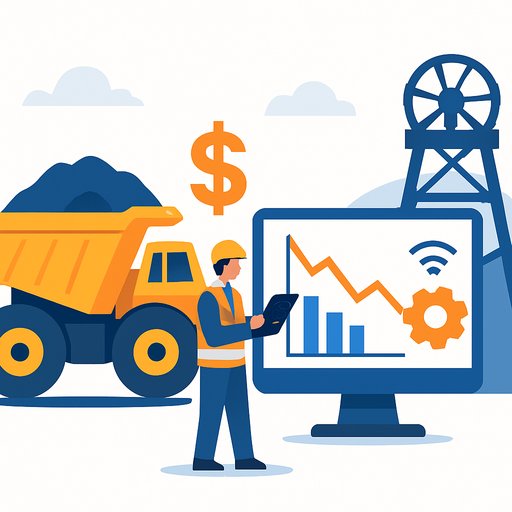CleanSpark's $1.15B Convertible Notes: What Ops Leaders Need to Know
CleanSpark plans to raise $1.15 billion through a senior convertible note offering to scale its Bitcoin mining footprint and accelerate AI/HPC infrastructure. The company expects about $1.13 billion in net proceeds, or up to $1.28 billion if underwriters exercise their options. Closing is slated for November 13, pending standard conditions.
For operations teams, this is a clear signal: capital is shifting to high-density compute, energy-secure sites, and data center buildouts that can flex between Bitcoin and AI workloads. Execution speed, power strategy, and vendor coordination will decide who wins.
Key takeaways for operations leaders
- $1.15B raise via senior convertible notes to expand Bitcoin and AI infrastructure.
- $460M buyback at $15.03 per share; remaining funds aimed at power/land, data centers, loan repayment, and corporate needs.
- AI pivot is real: CleanSpark joins peers shifting capacity toward GPU hosting and HPC as post-halving economics tighten.
- Scale advantage: CleanSpark is the second-largest miner with 46.6 EH/s, behind Marathon.
- Timeline: Offering expected to close November 13, subject to customary conditions.
How the capital will be deployed
CleanSpark earmarked $460 million for stock repurchases via privately negotiated deals at $15.03 per share. The rest targets expansion of power and land holdings, accelerated data center development, repayment of Bitcoin-backed loans, and general corporate use.
Translation for ops: expect new site acquisitions, interconnect activity, long-lead equipment orders, and retrofit plans for AI-ready capacity. Georgia is flagged as a strategic region for conversions and new builds.
Why this matters: AI/HPC is the hedge
Post-halving, miners are redirecting energy and real estate into higher-yield compute. IREN secured a multibillion-dollar GPU hosting agreement with Microsoft, and Core Scientific signed a $3.5B deal with CoreWeave for 200 MW of HPC. CleanSpark's move follows that path-shifting from pure mining to diversified compute economics.
Expect tighter lead times for switchgear, transformers, liquid cooling, and high-capacity networking as more miners chase the same AI demand. Vendor allocation and construction sequencing will be a competitive moat.
Market pressure to factor into your plans
Margins are under strain: rising power costs, softer Bitcoin prices, and halved block rewards are compressing profitability. Hashprice has hovered around levels that squeeze smaller operators and delay hardware purchases.
If you model revenue streams, refresh your assumptions with current hashprice data and sensitivity to power volatility.
Operational implications: what to line up now
- Site strategy: Validate Georgia and similar regions for power availability, interconnect queues, water constraints, and local incentives.
- Power procurement: Lock multi-year PPAs where possible; layer hedges; plan curtailment revenue and demand response programs.
- Cooling design: Prepare for AI density. Evaluate immersion or direct-to-chip liquid cooling, heat reuse options, and redundancy standards.
- Electrical and network: Order long-lead gear (transformers, switchgear) early; ensure fiber pathways and low-latency routes for AI workloads.
- Capacity mix: Maintain optionality between mining and GPU hosting. Modular blocks let you swing capacity as economics shift.
- Contracts: Build GPU hosting MSAs with clear SLAs, escalation clauses, and power pass-through mechanics.
- Financing risk: Track convertible triggers, potential dilution, and covenant constraints on capex timing.
- Supply chain: Secure vendor allocations for GPUs, PDUs, racks, and liquid cooling components; set buffer inventory for critical spares.
- Workforce: Upskill technicians for liquid cooling, GPU farm orchestration, and monitoring stacks.
- Contingency: Run BTC price and power-cost stress tests; pre-plan de-risked ramp schedules and phased energization.
Peers and momentum
TeraWulf's Q3 revenue rose 87% to $50.6M, with $43.4M from digital assets and incremental HPC leasing income. Core Scientific exited distress by leaning into AI agreements. The playbook is clear: pair energy-secure sites with compute customers who value uptime and throughput over speculative yield.
Timeline and checkpoints
The offering is expected to close on November 13. Watch for site announcements, interconnect milestones, and purchase orders that indicate where the first AI-ready capacity will land.
The $460M buyback sets a near-term floor for investor sentiment, while the remaining capital will show up in dirt moved, megawatts added, and GPUs deployed.
Upskill your ops team for AI/HPC
If you're pivoting capacity to AI, your team will need new playbooks fast. Explore focused learning paths for roles across operations and infrastructure.
Your membership also unlocks:






